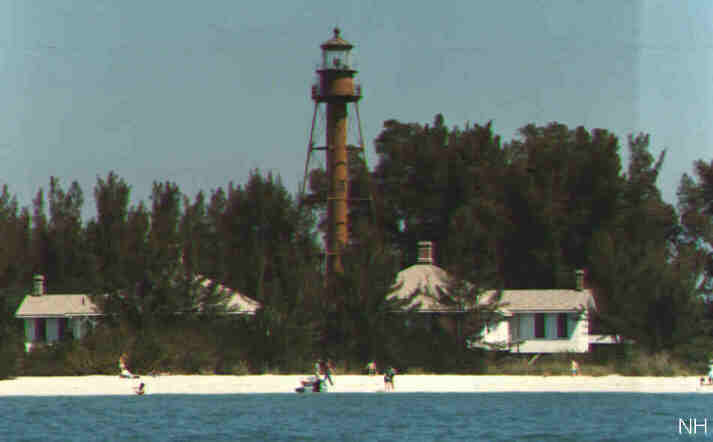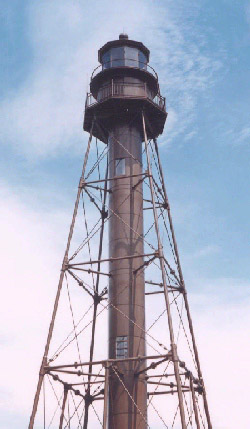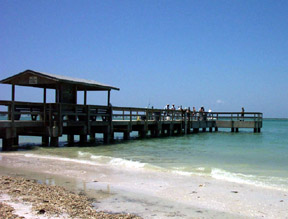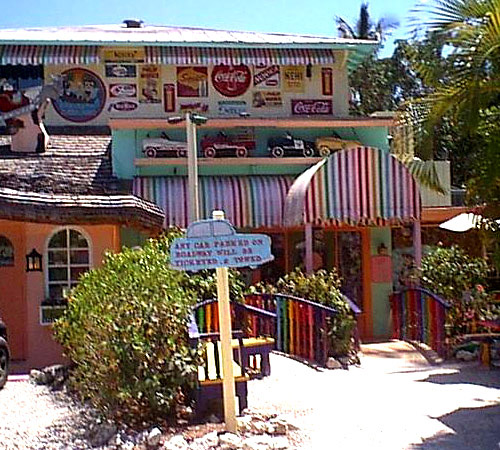
SANIBEL AND CAPTIVA ISLANDS
FLORIDA
The increasing
popularity and rising prices on Sanibel and
Even today there re is only
one automobile entranceway from the south via the causeway from Punta Rassa, an old cattle port near the entrance of the
(1) SANIBEL
CAUSEWAY (1962), a tol roadway, ended the ferrys
service started by the Kinzie Brothers in the early
twentieth century. Stop at the CHAMBER OF COMMERCE for maps and
information. It is one of the most visited Chamber location in
Turn left to reach (2) SANIBEL
LIGHTHOUSE (1884), known to locals as Point Ybel
Light and at 96-fet in height, it is the skyscraper of the island. It is island's most photographed spot and

Return northward
on Periwinkle. You'll love the island architecture and realize that most hotels
are small and hidden from the roadway. On Dunlap you'll find the wonderful (3) ISLAND
HISTORICAL MUSEUM, which contains the 1927 ERNEST BAILEY
STORE, the 1913 DAN WALDRON/W.D. SWINT HOUSE, and MISS
CHARLOTTA'S TEA ROOM. The nearby CITY HALL is an architectural treat of
unique design. The BIG ARTS CENTER is a center of social events.
Off Periwinkle is (4) the SANIBEL
CHURCH (1917), 1740 Periwinkle, started by English minister George E.
Day; the OLD SCHOOLHOUSE (1894), 2200 Perwinkle,
near the COMMUNITY HOUSE (1928), 2173 Periwinkle. There is a 1926 Post Office built of debris wood. There is a 1900 SANIBEL PACKING HOUSE and the 1913 RUTLAND HOUSE whose eleven-foot high walls keeps the rooms cool..



Sanibel Lighthouse The Captiva Island Inn The Famous Bubble Room
If you continue north toward Captiva Island rather than heading toward the main beach areas, you will see the entrance to the bayside nature areas. Nature lovers
adore (6) J. N. "DING" DARLING NATIONAL WILDLIFE REFUGE (1945),
with its famous five mile drive along Sanibel Island's preserved bayside. The
notable naturalist and cartoonist lived in Fish House Studio on a bayside
mangrove and inspired the entire island to conservation. Near the end of the trail is an observation tower and a Calusa Indian Shell Mound. The SANIBEL-CAPTIVA
NATURE CONSERVATION has a gift shop and famous plant nursery.
Head north to:
CAPTIVA ISLAND
Just six miles
by two miles, CAPTIVA is small only in size,
despite the occupation at the northern half of one of
When you cross (1)

Along
Downtown Captiva was best appreciated on foot since it is compact
and crowded. Go see the (3) CHAPEL BY THE SEA (1901) at 11580
Chapin, built by first settler William Binder as a schoolhouse. The nearby
MEMORIAL LIBRARY is an interest site.
Down
The entire
northern tip of Captiva is (4) SOUTH SEAS
PLANTATION, 320 acres of super resort facilities. Clarence Chadwick,
inventor of the check writer machine, took over the old Carter Plantation in
1923, and started a major golf, boating, and tennis resort.